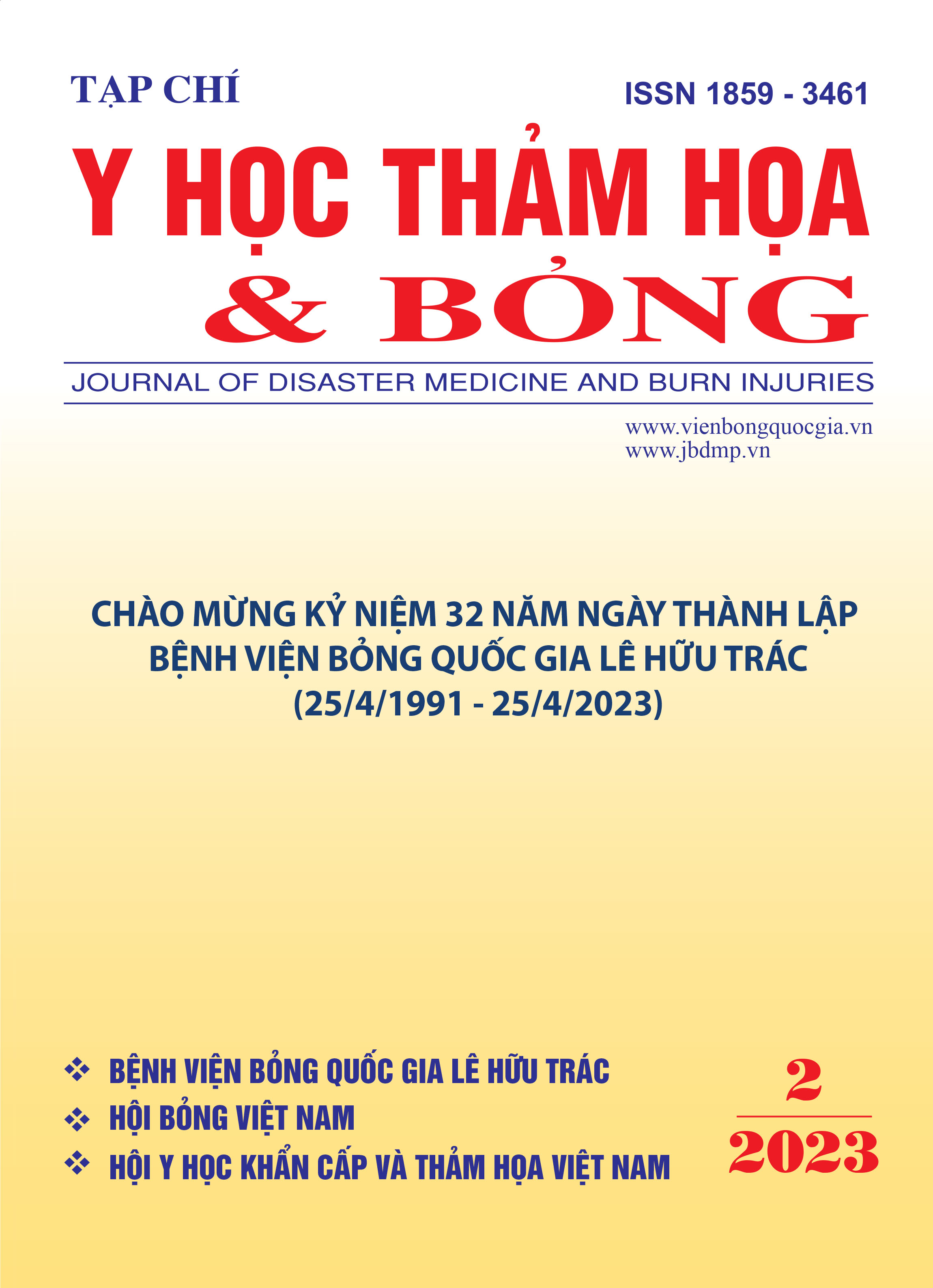Characteristics of using nephrotoxic antibiotics on burn patients at the Intensive Care Unit, Le Huu Trac National Burn Hospital
Main Article Content
Abstract
Objective: Analyze the characteristics of the use of nephrotoxic antibiotics including colistin, amikacin, tobramycin, vancomycin on burn patients at the Intensive Care Unit (ICU), Le Huu Trac National Burn Hospital.
Subject and methods: Retrospective description of the medical records of 84 adult patients (ages 18 to 60 years old) who received colistin or amikacin or tobramycin or vancomycin at Intensive Care Unit, Le Huu Trac National Burn Hospital from January 2020 to December 2020.
Results: The proportion of patients using a nephrotoxic antibiotic listed as follows: Colistin (15.48%); Amikacin (2.38%); Tobramycin (72.62%); Vancomycin (1.19%). The number of patients who used two kinds of nephrotoxic antibiotic in two consecutive courses was 7 cases, equivalent to 8.33% (Colistin with and amikacin were 3 cases, with tobramycin were 3 cases, with vancomycin was 1 case). Dosing regimens: Average loading dose of colistin was 8.75 ± 1.21 MUI and the maintenance dose of 8.55 ± 1.36 MUI/day (4.18mg/kg/day). Tobramycin was 232.62 ± 39.30 mg/day; Amikacin was 1000mg/day; Vancomycin was 2,5 ± 0.71 gam/day. The average number of days of treatment was 8.88 ± 4.96 days (3 - 28). The patients who were assigned to colistin with severe burns have used other antibiotics for more than 5 days with no effect, or have had positive culture results for Acinetobacter baumannii, Pseudomonas aeruginosa,... Besides, amikacin or tobramycin, or vancomycin were mostly indicated empirically.
The two-antibiotic regimens succeed in 60% of cases (87.91%). Among the two-antibiotic regimens, the combination of tobramycin and piperacillin/tazobactam had 33.33% successful cases (26.25%). There were two combinations of antibiotics with success with the following results: The combination between tobramycin and cefoperazone/sulbactam had 80% successful cases (25%), meanwhile, the combination between colistin and carbapenem had 72.73% successful cases (13.75%).
Conclusion: The use of nephrotoxic antibiotics (colistin, amikacin, tobramycin, vancomycin) has been investigated in burn patients at Intensive Care Unit, Le Huu Trac National Burn Hospital.
Article Details
Keywords
Burn patient, nephrotoxic antibiotic use
References
2. Bộ Y tế (2015), Hướng dẫn sử dụng kháng sinh, Nhà xuất bản Y học
3. Bộ Y tế (2020), Hướng dẫn thực hiện quản lý sử dụng kháng sinh trong bệnh viện, Nhà xuất bản Y học.
4. Học viện Quân Y (2018), Giáo trình Bỏng, Nhà xuất bản quân đội nhân dân, tr.236-249.
5. Lương Quang Anh (2014),"Đánh giá tình hình sử dụng KS tại khoa Hồi sức cấp cứu, Viện Bỏng quốc gia năm 2014", Báo cáo kết quả nghiên cứu đề tài cấp cơ sở.
6. Nguyễn Thị Thanh Minh (2011),“Khảo sát tình hình kháng kháng sinh và đánh giá hiệu quả một số liệu pháp điều trị kháng sinh đối với bệnh nhân bỏng nặng tại khoa Hồi sức cấp cứu, Viện Bỏng Quốc Gia”, Luận văn thạc sỹ dược học, Trường Đại học Dược Hà Nội.
7. Ravat F. et al., (2011), “Antibiotics and the burn patient”, Burns 37: 16-26.


